Whistler’s Woman In White: Joanna Hiffernan – Royal Academy, London
A review of Whistler’s Woman in White: Joanna Hiffernan, on now at the Royal Academy. An attempt to recentre Whister’s model, muse and mistress suffers a little from a lack of first-hand insight into the lady herself.





Whistler’s Woman In White
I was really prepared to like this exhibition. I like Whistler, as a painter, for a start. And also find his personal hijinks amusing as I’ve written about before. In fact, I like that Pre-Raphaelite to Aesthetic turn-of-the-(last)-century period in general. And the idea of an exhibition ‘rediscovering’ or recentering an artist’s muse as an active participant rather than passive beauty also attracted me. That was at least the impression I had of the exhibition’s subject matter.
Whistler’s Woman in White: Joanna Hiffernan is in the Royal Academy‘s relatively small upstairs exhibition space. I have seen some very good things here; the size lends itself to exploring a less familiar artist or topic in some detail. And this exhibition follows a very logical order: from influences on Whistler’s Symphony in White paintings of Hiffernan; to the works themselves; to prints, Japonisme and an excursion with Gustave Courbet to Normandy; and finally artworks influenced in turn by the ‘Woman in White.’ It’s a very satisfyingly full circle moment.
And there are some excellent works on display here too. Including almost all known images of Hiffernan by Whistler (and Courbet). And a few unexpected delights, such as a very nice Klimt I don’t think I had seen before. But perhaps you can tell from my tone that this exhibition didn’t quite live up to my expectations. And the primary reason? Not enough of Joanna Hiffernan beyond the pretty images!
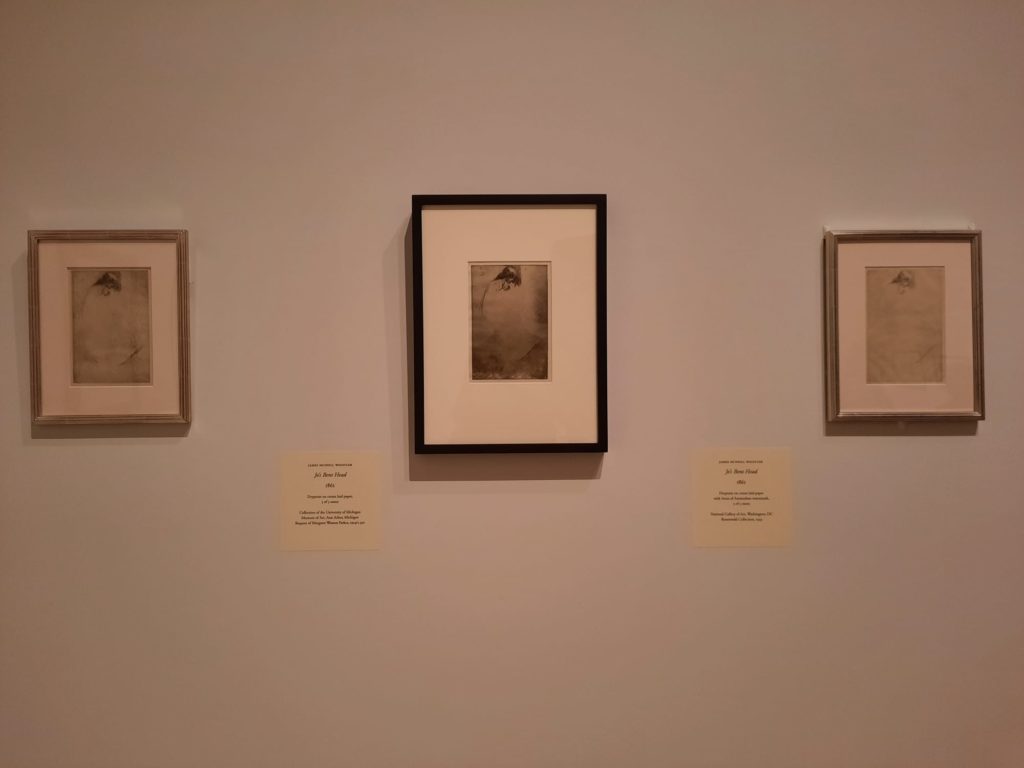
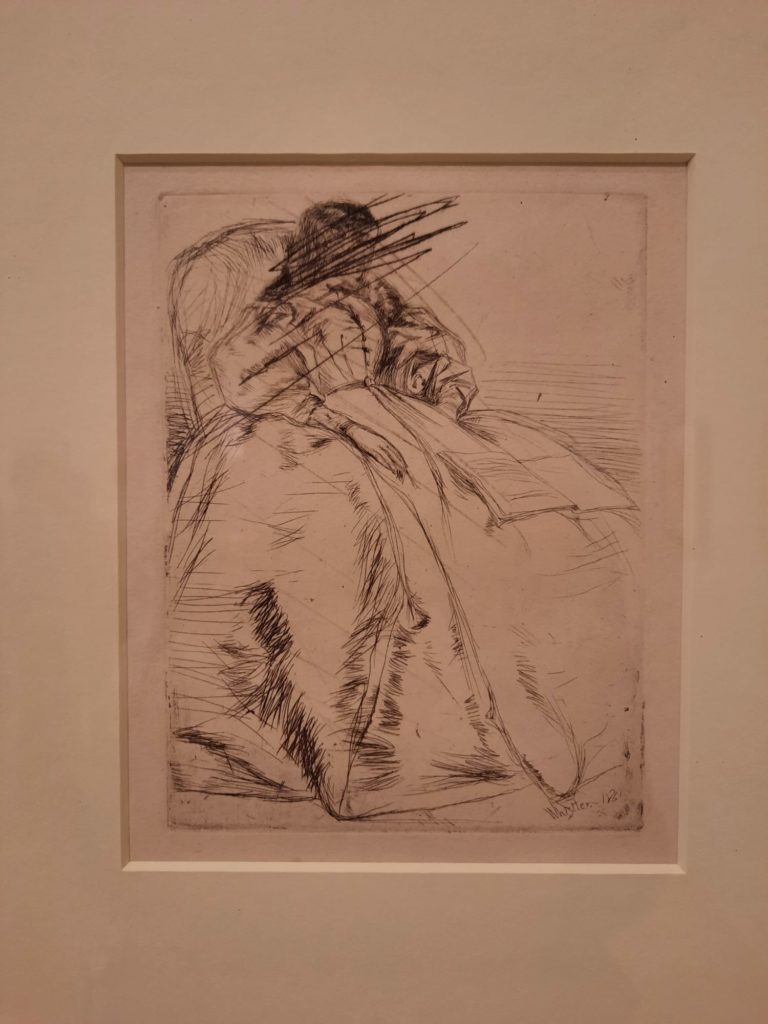
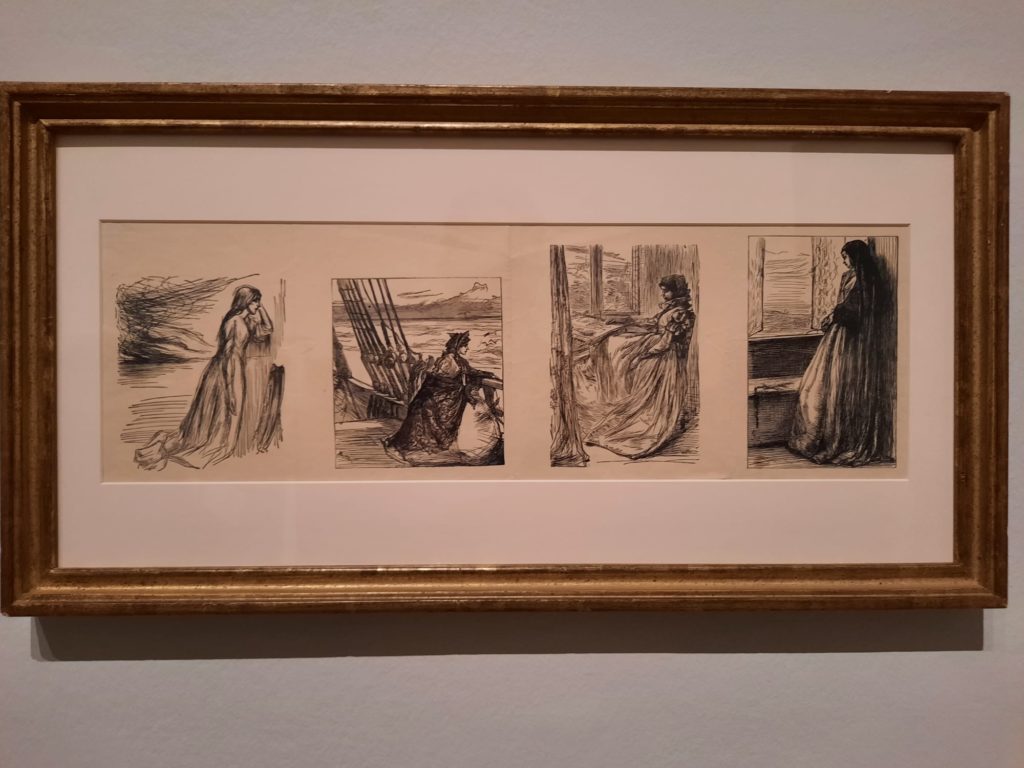


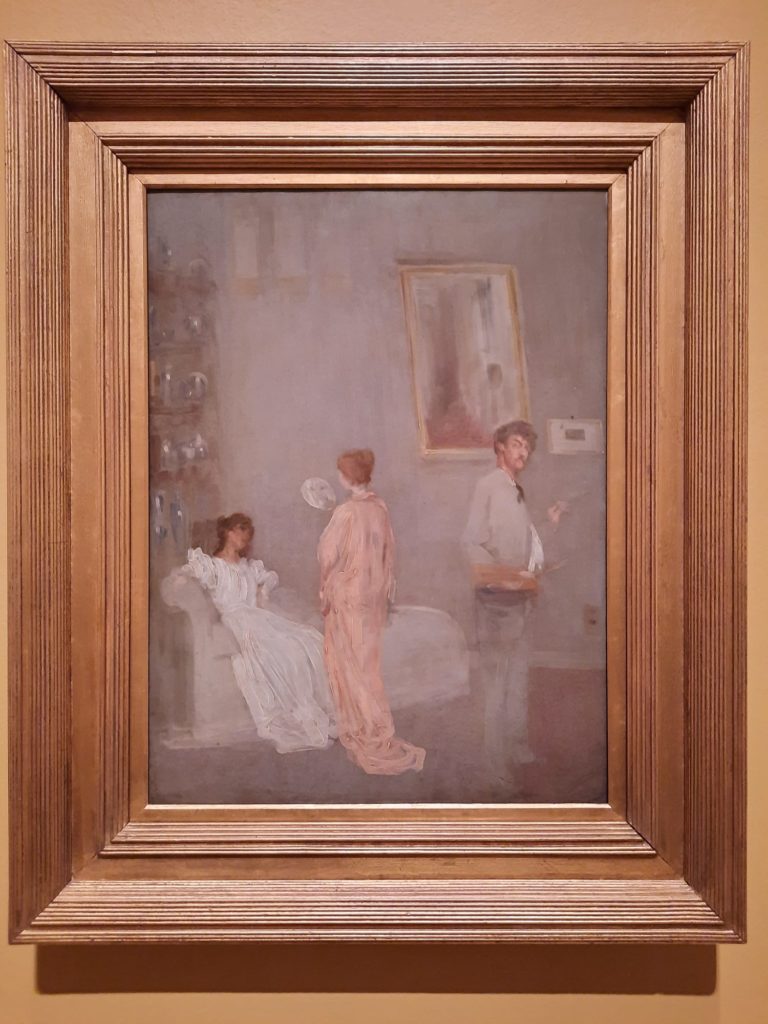
Searching For Joanna Hiffernan
I don’t think I would have minded so much, had I not thought the RA were somewhat overstating what the exhibition is all about. It’s right there in the introductory text – this exhibition is meant to explore, “for the first time, the fruitful collaboration between artist and model, and the remarkable works of art that this creative partnership produced.” I don’t think this came through strongly enough.
It seems that part of the reason for this is a lack of concrete information about Hiffernan. We know who her parents were, and that, born in Ireland, her family moved to London when she was about four. We know that Whistler took up with her as model and lover when he moved to London in 1860. Whistler included her in his will (encouraged by his mother who wanted him to do a charitable thing and set her back on an honourable path). But in the end she died in the same year he did, 1903.
There is one glimpse into her personality; the label for the original Symphony in White mentions her irreverent reaction to the portrait’s rejection by the Royal Academy (how times change!). But otherwise she is mostly present as a muse, and it’s all about Whistler. After all, who were those artistic forebears influencing? Whistler. Who had a penchant for Japonisme? Whistler. One label states that on a European holiday ‘they’ abandoned one painting and returned to Paris to finish another. Yet in an adjacent one, we find that Whistler wouldn’t ‘lend’ Hiffernan to pose for fellow artist Frederick Sandys. Sounds more like a possession than a partner. Perhaps there was a true creative partnership in there somewhere. Perhaps the unequal power relations and contemporary societal prejudices have erased the evidence. But I am yet to be convinced.

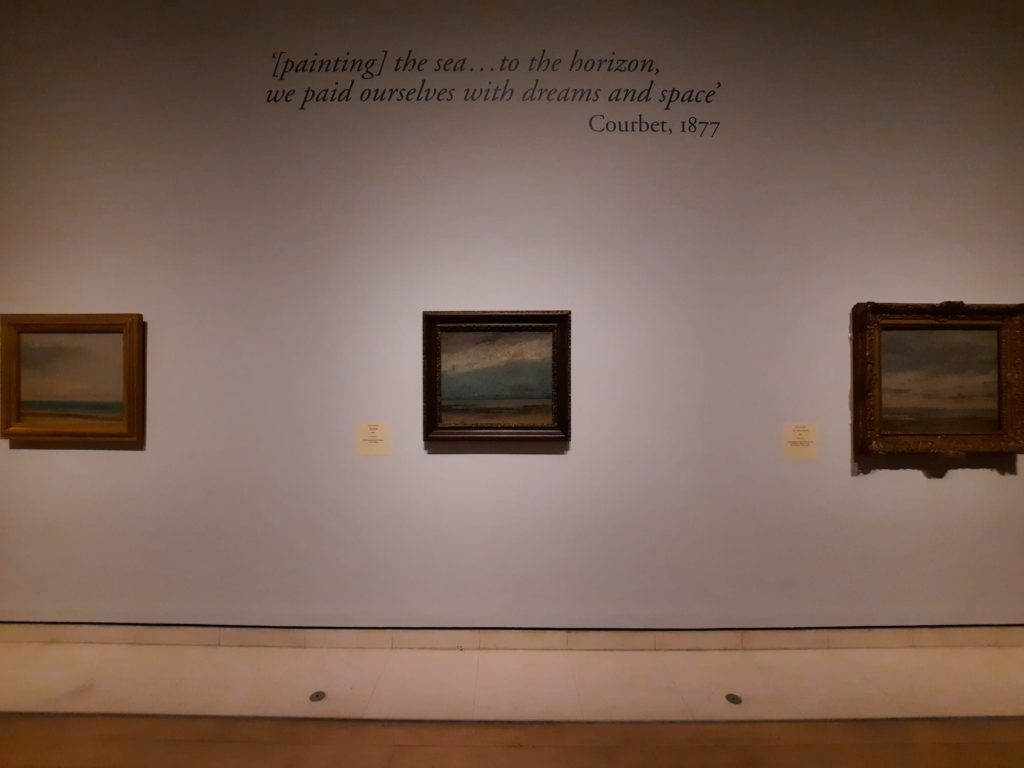
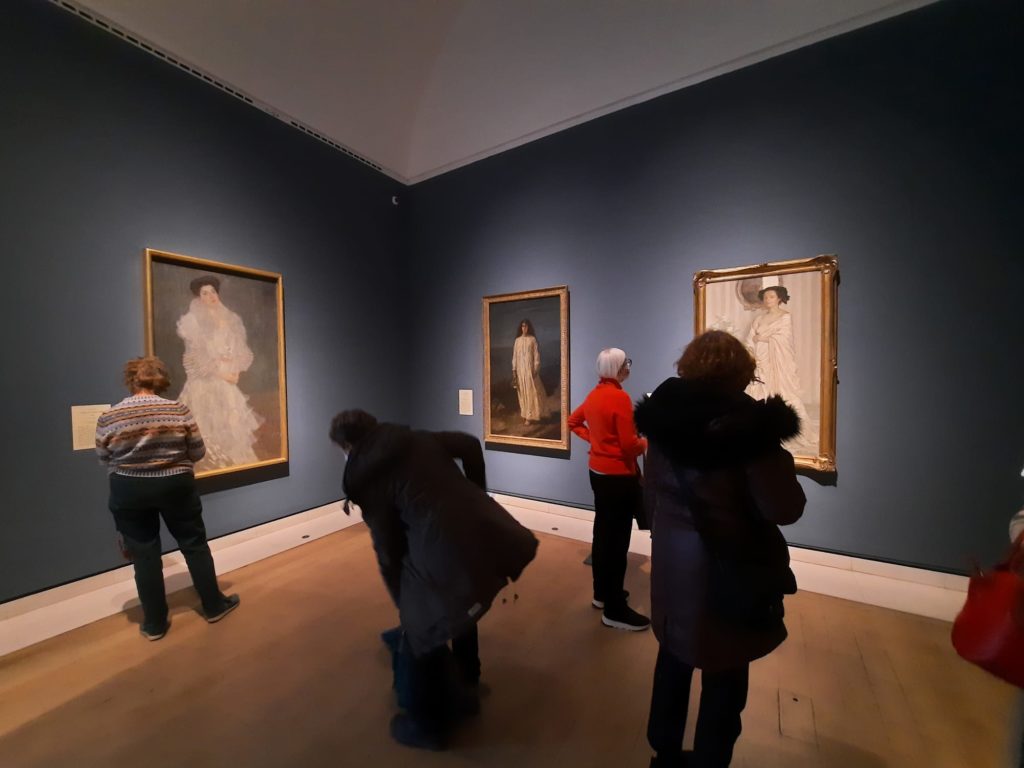
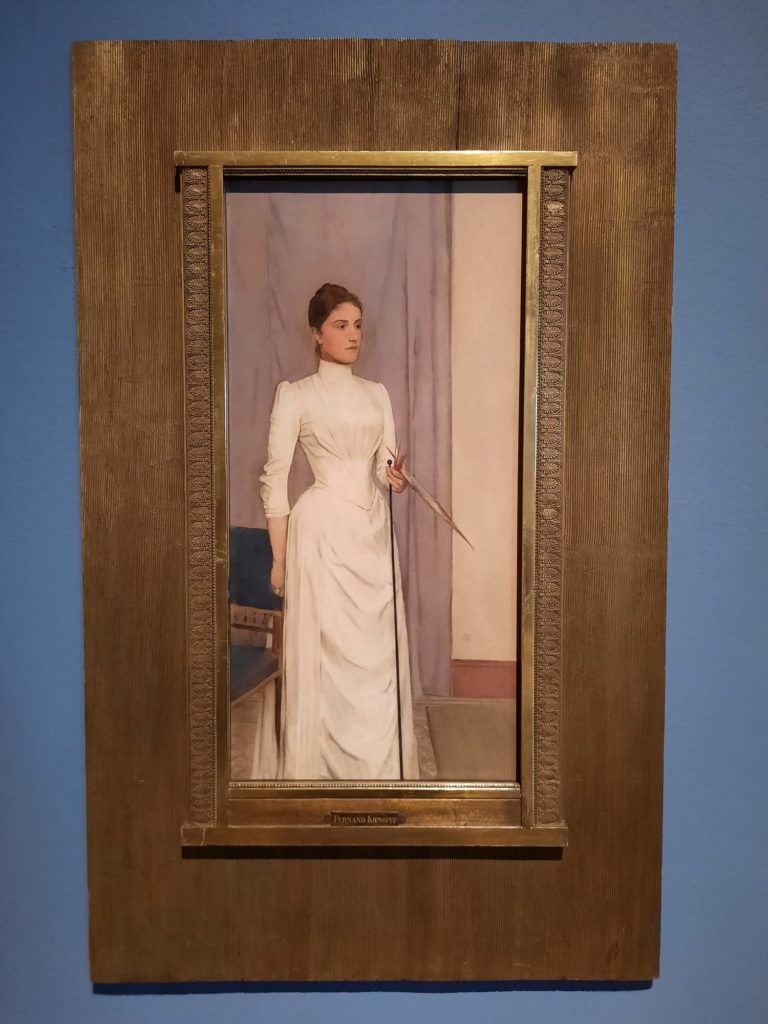

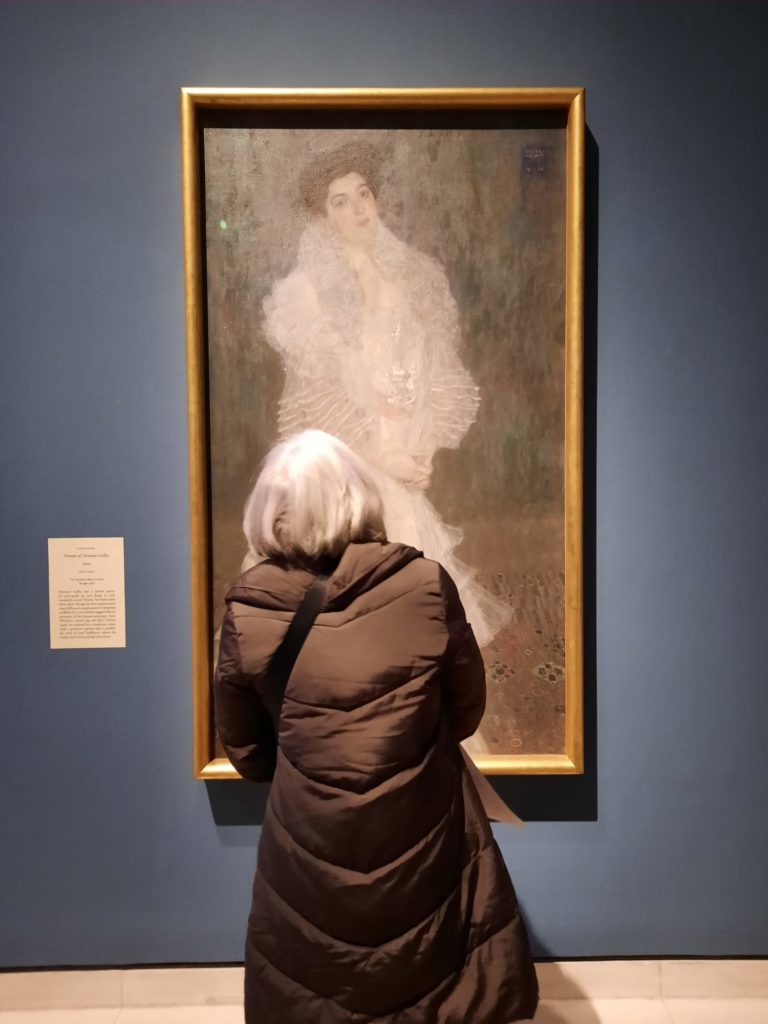
Whistler And His Woman In White
If I take a step back from this unmet feminist expectation, this is a good exhibition. As I said at the outset there is a high calibre of paintings on view (I particularly liked one of my old haunt of Wapping), and a good structure to the exhibition. If I had come expecting something all about Whistler, I would have rather liked it.
Perhaps this is a cautionary tale, then. It might be better to have explored the angles I mentioned about why we don’t know more about Hiffernan, rather than positioning this as an exploration of a partnership which to me seemed very one-sided. I would have loved to know more about what she thought, how she interacted with the different circles he moved in, their process of working together. But alas, it was not to be on this occasion.
Now that you will be going into the exhibition fully aware of this caveat, you may step back and enjoy with the peaceful and harmonious paintings before you. Whistler and the move away from narrative painting (‘art for art’s sake’) have had a significant impact on later artistic developments, after all. And his painting of ‘The Girl in White’ foreshadowed all of the ‘symphonies’, ‘harmonies’, ‘nocturnes’ and other beautiful works to come.
Salterton Arts Review’s rating: 3/5
Whistler’s Woman in White: Joanna Hiffernan on until 22 May 2022
Trending
If you see this after your page is loaded completely, leafletJS files are missing.


One thought on “Whistler’s Woman In White: Joanna Hiffernan – Royal Academy, London”